Research
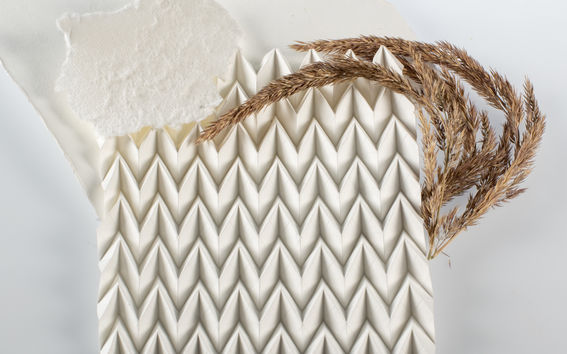
Cellugami project tackles packaging challenges with origami tessellations
There is an increasing global need to develop sustainable alternatives to many existing packaging solutions, such as replacing plastics and encouraging reuse and repurposing of packaging materials. The Cellugami project addresses this need with a multidisciplinary approach that combines design, mathematics, and materials science. The project’s fundamental research directions include tessellated origami corrugations, curved spatial structures, alternative cellulose-based metamaterials, as well as a focus on creating novel visual narratives through materials design.
Project team:
Doctoral Candidate Laureen Mahler (ARTS), Professor Masood Masoodian (ARTS), Professor Jarkko Niiranen (ENG), University Lecturer Kirsi Peltonen (SCI)
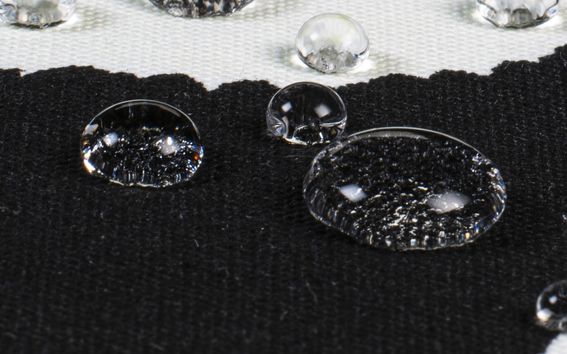
Sustainable lignin coatings for textiles and packaging
Lignin particles (CLPs) and certain epoxy compounds have shown to be useful for the preparation of multiresistant surface coatings. This coating has been proven to work on plastic-like films (such as regular plastics but also films of biomaterials) and textiles. On such materials, the coating stays firmly, protects against stains, sunlight, water, and microbial degradation. This project aims at tailoring the CLP surface coating for bio-based packaging and textiles. By improving the properties of the substrates, the coating would enable a broader use of biomaterials and reduce the use of fossil-based, non-degradable materials in packaging, and the hazardous chemicals used in the dying of textiles.
Project team:
Doctoral Candidate Sahar Babaeipour, Professor Monika Österberg (CHEM), Professor of Practice Pekka Oinas (CHEM)
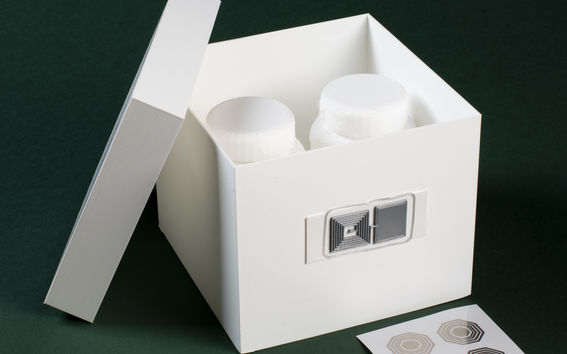
Sustainable intelligent packaging solutions
The packaging industry is a rapidly growing sector with an expected market share of ~$27 billion by 2024. As a promising actor of the sector, sustainable and intelligent packaging of products can provide not only protection against deteriorative ambient effects but also traceability and monitoring data across global supply chains. Therefore, innovative packaging solutions with enhanced functionalities such as condition monitoring and sensing of products, package identification (ID), counterfeit production in the supply chain can accommodate the consumer needs and fulfills the regulatory requirements especially in medicine, biological products and fresh produce. Taking all these considerations into account, this project will merge several disciplines of engineering and materials science to provide sustainable yet intelligent packaging monitoring solutions.
Project team: Doctoral Candidate Madhawa Basnayaka, Professor Jouni Paltakari (CHEM), Professor Riku Jäntti (ELEC)
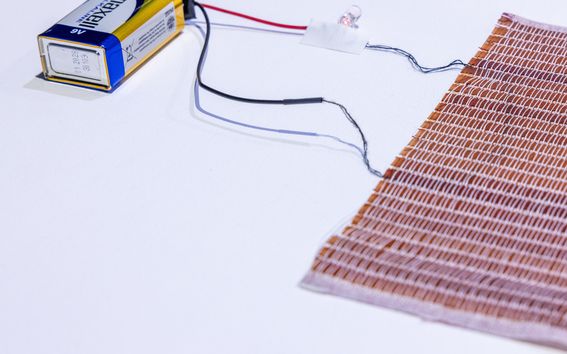
AIyarn-project combines sustainable textiles, nanomaterials, and machine learning
Electronic textiles (e-textiles) is a term that refers to digitally enhanced textiles, the peculiarity of which is to provide added value to the wearer. The electronic components of e-textiles enhance their aesthetics or enable new functionalities, such as wearable electronics. Common problems hindering wider commercialization are durability (e.g. fragility), user discomfort due to bulky integrated electronics, and sustainability, as inorganic and non-renewable materials are often used. In this project, these challenges are addressed by developing new yarns based on biomaterials for e-textiles. This will be done by combining nanocellulose with different types of functionalization that will provide optimized conductive, piezoelectric or actuating properties.
AIyarn will produce new biomaterial yarns and represent a first use case of artificial intelligence, exploiting Bayesian optimization for bioinnovations.
Project team: Doctoral Candidate Matteo Iannacchero (CHEM), Professor Jaana Vapaavuori (CHEM), Professor Patrick Rinke (SCI)
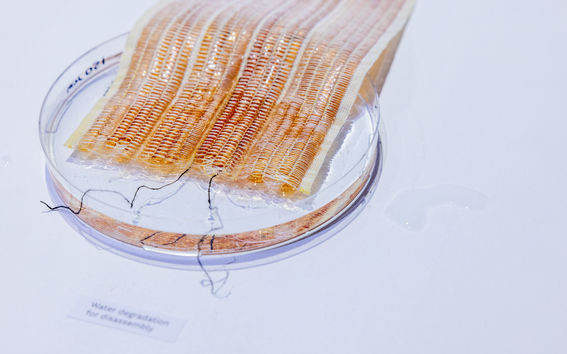
Computational fabric
The aim of this project is to develop a computational fabric that integrates sensing and computation directly into the fabric. The fabric is made of novel bio-based functional fibers. This project combines design, materials science, electronics, and artificial intelligence. It leverages machine learning
and AI methods for sensoring of human body and for design of advanced smart biomaterials. This research provides new knowledge on how to design and produce fully integrated smart materials and wearables in the context of sustainability. As electronics become fully integrated into the textile materials, they need to adapt to the dynamic nature of textiles, which poses new challenges for the electronics design. The aim of this project is to tackle these challenges.
Project team: Doctoral Candidate Sofia Guridi (ARTS), Professor Kirsi Niinimäki (ARTS), Professor Simo Särkkä (ELEC & FCAI), Professor Jaana Vapaavuori (CHEM), Professor Yu Xiao (ELEC)
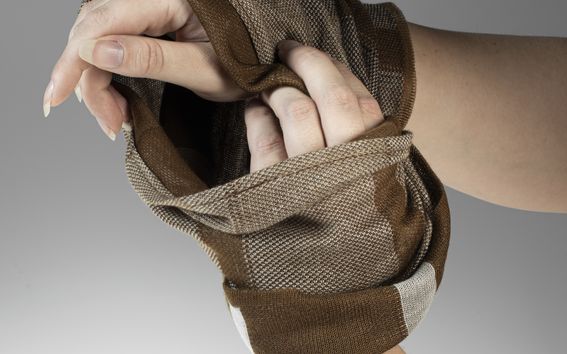
CelluMimicry-project develops environmentally friendly water repellent textiles
Most of our outdoor garments rely on synthetic fabrics for water-repelling properties. Moving away from oil-based products, new solutions are needed to gradually replace synthetic fibers. Nature has proven that it is possible to achieve hydrophobicity without synthetic or toxic materials. Can we do it too?
In a collaboration between business, chemistry, and materials science, this project aims to use biomimetic approaches to produce hydrophobic cellulosic textiles. By studying how nature achieves hydrophobicity, this functionality can be introduced with bio-based chemicals. The rising awareness of the environmental impact of the textile industry provides new market opportunities for sustainable innovations. To support our technical development towards commercialization, we will analyze the existing landscape of products that build on biomimicry.
Project team:
Doctoral Candidate Helena Sederholm (CHEM), Professor Michael Hummel (CHEM), Professor Samuli Patala (BIZ), Professor Minna Halme (BIZ)
SEREPLAS-project aims to improve recycling efficiency of multilayer packaging
The recycling processes of fibre-based plastic-coated barrier packaging (such as milk cartons) cannot selectively separate and recover the surface plastic layer. The fibrous material stuck to and following the plastic is incinerated with the plastic. The separated fibrous material (usually bleached chemical pulp fibres) is used in significantly lower-end products. To increase the added value of recycled materials, both the plastic must be recycled more efficiently, and the fibrous material must be recovered for higher value-added products.
The SEREPLAS project develops an efficient and selective separation process of plastic and cardboard. The separated plastic will be used for chemical recycling and the fibrous material for higher added value production.
Project team:
Doctoral Candidate Emilia Kauppi (CHEM), Professor Jouni Paltakari (CHEM), Professor Petri Kuosmanen (ENG)
Industrial collaboration: Stora Enso, Valmet
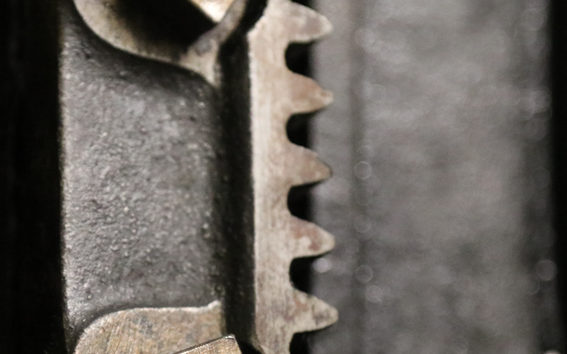
W-E-A-V-E project re-assembles textile cultural sustainability
The W-E-A-V-E project, a pioneering collaboration between Aalto University and Borås University – Swedish School of Textiles, addresses sustainability challenges in the textile industry through cultural innovation and a transdisciplinary approach. W-E-A-V-E stands for "Weavers Entangled in Artisanship Vernacular Ecologies," reflecting the interconnectedness of people, professional craftsmanship, and the environment. By combining expertise in textile practice, design research, and historiography, the project develops new sustainability narratives, based on the model of European silk hand-weaving, critically endangered. Key research aspects focus on the maintenance of a 19th-century Jacquard hand-loom and the analysis of weavers’s strategies for sustaining their craft. Merging theory and practice, W-E-A-V-E leverages alternatives and explores the autonomy of textile-making beyond end-products, mobilizing heritage to inform innovative, sustainable futures.
Project team:
Doctoral Candidate Elise Piquemal (ARTS), Professor Kirsi Niinimäki (ARTS), Professor Delia Dumitrescu (University of Borås)
SciSustain project – Accelerating the scale-up of recycling technology for multilayer packaging
The current recycling system is not built to retain the value of materials in their end of life. This calls for improvements in the recycling systems, from collection & sorting, recycling and application phases. Taking the case study of the recycling of multilayer packaging, together with Stora Enso, SciSustain project aims to support the scale up of novel recycling technologies for used beverage cartons. Supported by phased implementation, techno-economic, and life cycle analysis, the project aims to feedback iterative improvements for the development of novel recycling technology, making way for sustainable bioinnovations at large to achieve commercial success.
Doctoral Candidate Vida Hardjono (CHEM), Professor Luana Dessbesell (CHEM), Professor Jouni Paltakari (CHEM)
Industrial collaboration: Stora Enso, Business Finland






